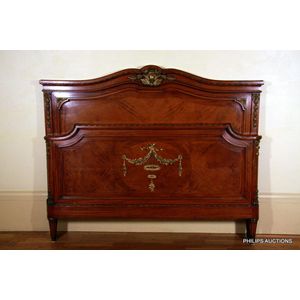Qing Dynasty Ivory Table Screen with Intricate Carvings
You must be a subscriber, and be logged in to view price and dealer details.
Subscribe Now to view actual auction price for this item
When you subscribe, you have the option of setting the currency in which to display prices to $Au, $US, $NZ or Stg.
- Ivory - Ivory is a hard white material that comes from the tusks of elephants, mammoth, walrus and boar, or from the teeth of hippopotamus and whales. The ivory from the African elephant is the most prized source of ivory. Although the mammoth is extinct, tusks are still being unearthed in Russia and offered for sale.
Ivory has been used since the earliest times as a material for sculpture of small items, both in Europe and the east, principally China and Japan.
In Asia ivory has been carved for netsuke, seals, okimono, card cases, fan supports, animals and other figures and even as carved tusks.
In the last 200 years in Europe ivory has been used to carve figures, for elaborate tankards, snuff boxes, cane handles, embroidery and sewing accessories, in jewellery and as inlay on furniture. Its more practical uses include being used for billiard balls, buttons, and a veneers on the top of piano keys.
The use and trade of elephant ivory have become controversial because they have contributed to Due to the decline in elephant populations because of the trade in ivory, the Asian elephant was placed on Appendix One of the Convention on International Trade in Endangered Species (CITES), in 1975, and in January 1990, the African elephant was similarly listed. Under Appendix One, international trade in Asian or African elephant ivory between member countries is forbidden. Unlike trade in elephant tusks, trade in mammoth tusks is legal.
Since the invention of plastics, there have been many attempts to create an artificial ivory - Ming Dynasty - The Ming Dynasty was a ruling dynasty of China from 1368 to 1644. It succeeded the Yuan Dynasty and preceded the Qing Dynasty. The Ming Dynasty was established by Zhu Yuanzhang, a former Buddhist monk who became a rebel leader and eventually overthrew the Mongol Yuan Dynasty. During the Ming Dynasty, China experienced a period of relative stability and prosperity. The government was centralized and bureaucratic, with the emperor at the top of the hierarchy. The Ming Dynasty is known for its cultural achievements, including the development of porcelain, the invention of movable type printing, and the construction of the Great Wall of China.
- Qing Dynasty - The Qing Dynasty was the last imperial dynasty of China, ruling from 1644 to 1912. It was established by the Manchu people, who originated from the northeastern region of China. The Qing Dynasty was preceded by the Ming Dynasty and followed by the Republic of China.
This item has been included into following indexes:
- Chinese furniture, chairs - chairs, Qing dynasty 337
-
Chinese furniture, screens
- fixed room screens 313
- table screens 108
-
Chinese furniture, tables
- tables 387
- tables, hall and side 222
- furniture, period or style - oriental 1,686
Visually similar items

Robert Prenzel (1866-1941), a blackwood settle, circa 1904-1909 the rectangular back inscribed with the Latin motto Pax Huic Domui - Peace be to this house - above a gryphon frieze, stylised scroll arms and a hinged seat, the front and sides carved with wa

Baronial hall seat, Highback oak with foliate, and medallion carvings

A French mahogany & ormolu bed with neoclassical Elements, late 19th century, the bedhead of gently arching form with quarter veneer panelling and applied moulding, an applied ormolu motif to the crest, small spandrels and pendants, the bed end of conformi

A German Biedermeier four drawer flame mahogany secretaire chest. 88 cm high, 97 cm long, 52 cm deep
